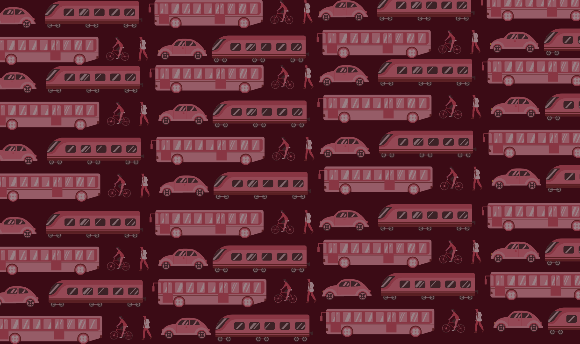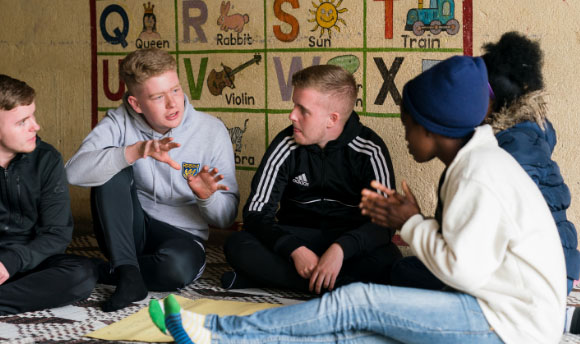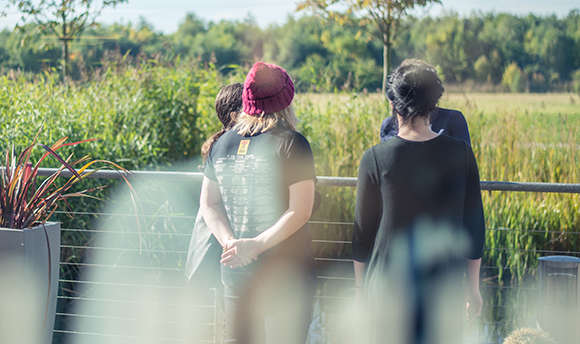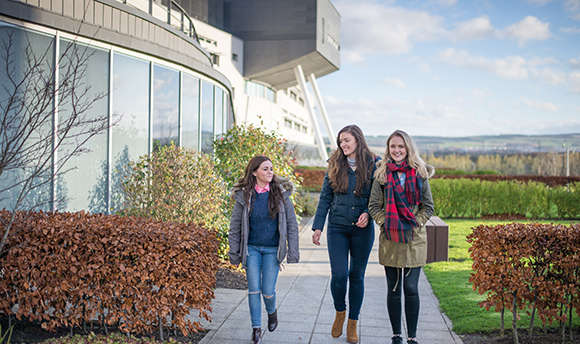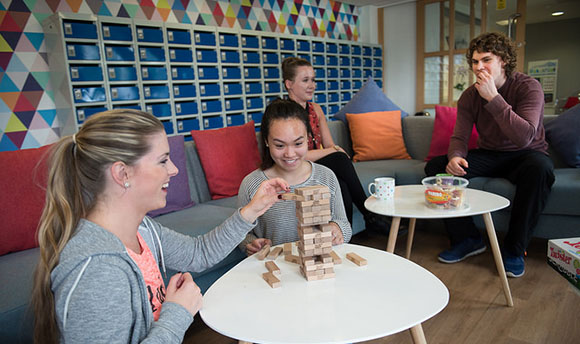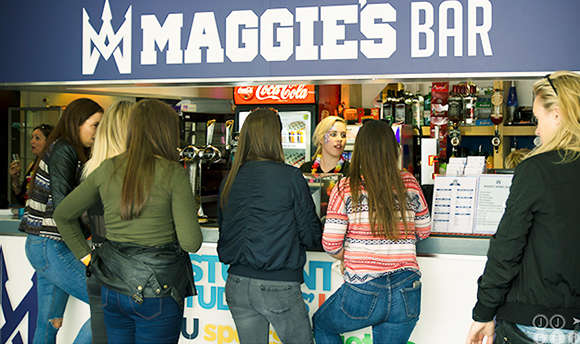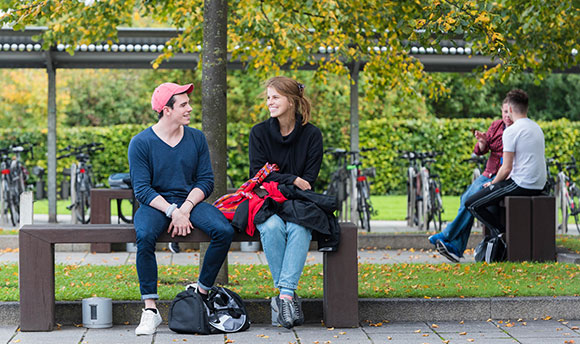As one of the newest digital and graphic design courses on offer, QMU's cutting-edge BA (Hons) Digital and Graphic Design course will merge artistic expression with advanced technological skills, equipping you with the tools to excel in the creative industries of tomorrow.
Meet Jack Mullins, a Motion and Graphic Designer at The Union - one of Scotland’s largest and most respected advertising agencies, based in Edinburgh. Jack is flourishing in the dynamic, fast-paced landscape of digital design, where creativity meets constant innovation.
In this blog, Jack tells us what his job involves and why he loves being a Graphic Designer, as well as providing us with an insight into the career opportunities that are available across multiple industries for aspiring digital and graphic designers.
Designers don’t just shape culture; we shape the world around us. We influence the way people think, interact, and engage with each other. We create change. It’s our responsibility to design for a better world...
Tell us about the advertising agency you work for?
As a large integrated advertising agency, we can do pretty much everything from strategy and data analysis through to digital and print advertising, website design, motion design, animation, video editing and post-production. It’s a great place to work - lots of spinning cogs and talented people to work with.
What does a digital and graphic designer do?
We bring ideas to life!
Essentially, we’re visual communicators who craft stories that resonate and build connections.
We distil the abstract information given to us and find a way of bringing it into the real world - making something that people connect with. That’s how brands and organisations sell products and services. It’s only with our help that they can be successful.
Why are digital and graphic designers important?
Designers don’t just shape culture; we shape the world around us.
We influence the way people think, interact, and engage with each other. We create change. It’s our responsibility to design for a better world, and it’s a responsibility I don’t think should sit lightly on any designer’s shoulders. We, more than anyone else, can create the change we want to see in the world, so our morals as a person must heavily mould our ethics as a designer. Whether you want to work for a sustainably focused company, a political party or a social justice movement, the scope of what you can do is quite staggering. Graphic Designers are needed in all sectors of society, especially in today’s world, so what we do is a great honour.
What attracted you to a role in digital and graphic design?
At school I was always interested in the visual arts, TV, movies and graphics in general, although I maybe didn’t understand what it was at the time. I think I had some artistic skill, but I didn’t have the patience or dedication to pursue it seriously.
Then I discovered that graphic design was a way of expressing that same creativity – but in a different way. I became intrigued, and eager to learn what a career in graphic design could look like. So, I applied for a graphic design degree at university. It was during my study that I developed a passion for graphic design that I hadn’t experienced for any other subject. I knew I was on the right study and career path.
How did you get into your current role?
So, after university I was lucky enough to secure a job at a small graphic design agency in Edinburgh through a connection my brother had. The graphic design industry is no different than any other industry, it is all about who you know, but maybe what sets our industry apart is that a connection or an introduction won’t get you a job. It’s competitive out there. You need to have a great portfolio, and put in the hours to demonstrate you’re good enough to be in that role. There’s no shying away when it comes to graphics, your ability is on show all the time and that may be nerve-wracking, but you can do it if you put your mind to it.
After I worked in that role for six months, I got my shot at working for one of the big agencies. Through an introduction from my old university lecturer and after three interviews, I secured my current role at The Union, which I’ve now been in for three and a half years.
What does your role involve?
My role involves a lot of the nuts and bolts of design, as well as a significant understanding of different software and how to use it.
In our department, I work closer to the tail end of our workflow. We have the ideas people who are the Art directors and Copywriters, but I’m more like the craftsman - they will come to me with an idea and I’ll assist them by bringing their vision to life. My role therefore involves a lot of talking to people in the team, gaining an understanding what it is they see in their head, and then translating that on to the screen.
What do you enjoy most about your job?
The obvious answer is making great design!
The feeling of crafting something that not only hits you on a personal level, but when that same feeling is conveyed back to you by a colleague or a client, it’s brilliant. I know that a lot of designers, especially when they’re starting out, can struggle with imposter syndrome. The question of whether I’m good enough to be a designer and whether I can do my job is one that still rattles me to this day, so the times when I can reassure myself that this is something I’m meant to do is really enjoyable and satisfying.
Meeting a lot of really lovely and like-minded people is a real benefit of the job. A lot of designers think in a very similar way, and that comes as no surprise as we’re trained to be problem solvers. We are very interested and inquisitive in the world around us and I find that a really enjoyable creative environment to work in.
What do you love about working within a creative agency?
I love the hustle and bustle. Although it can be a little stressful at times, it’s amazing to see such a big group of people contributing so much and all in slightly different ways. It’s a pleasure spending my days with such talented people who constantly amazing me with what they do, and how quickly they can do things, often when they are under a lot of pressure. There’s never a dull day - the working environment is fast paced fast moving - but that means I get to work on so many different projects which keeps me interested.
What have been some of your career highlights?
I’ve recently worked on a great project with VisitScotland. Video editing and meeting a tight turnaround with great results for such an important cultural institution was a great honour. I’m really happy with how well it turned out.
A few years ago, a brand identity that I developed was selected for the Scottish Tourism Industry Conference – the brand identity has been used to promote the event at the Edinburgh International Conference Centre every year since. I was really happy with that project, as it was my first big shot at getting my work showcased on such a big stage. I designed an identity that I was really proud of, and it was very rewarding that my designs were chosen to promote a national event over the course of several years.
What does a typical day look like?
Most days involve me spending lots of time on my computer working through my different projects and taking them to completion. I like having a big project I can really get my teeth into and work a full day on - it’s great when I get to do that, but often I’m juggling lots of smaller jobs, perhaps 5 or 6 in a day, so you need to be pretty speedy, agile and well organised!
I use a range of programmes including Adobe Photoshop, Illustrator, InDesign, After Effects, Premiere Pro and DaVinci Resolve. It does take several years to learn all of these packages, but when I started at university, I didn’t know how to use any of them. It’s just a question putting the hours in and getting lots of practice.
I’m often discussing projects with colleagues. It’s important to listen to each other and get other people’s perspectives on your work. We often review each other’s work, which is helpful as we can pick up on things that people may have missed, so we work together to ensure things are perfect.
I’ll also communicate with Account Manager’s whose job it is to coordinate the projects. They have over all responsibility to sure everything is running smoothly and that projects are running to time, and they lead on direct communication with the client. It’s not a job that I envy.
I’ll also have meetings with clients where I’ll pitch my work and promote the concepts I’ve developed, in the hope that they like it and select it. Presenting is something you have to try to master at university. It can be a bit intimidating when you’re sitting in front of 10 people, all staring at you, and you’ve got to sell them your big idea. But, if you get as much presenting experience as possible at university, you’ll be less nervous and more accomplished when you have to do it in the workplace. I’ll also occasionally go on shoots with the client, which is really fun. Although I’m not in a director’s role, it’s really interesting to see how everything gets made. Getting to experience beautiful locations all over Scotland can also be a lovely added bonus.
What is the most challenging part of working in digital and graphic design?
The most challenging part of the job is staying as creative as you possibly can. When you are under pressure, however, it’s often in those pressurised moments when you produce your best work. Just keep a clear head, and take your time as much as you can, and the ideas will start to flow. I’ve surprised myself, loads of times, when I’ve designed something really well, even though I’ve been really short of time.
Creativity is a muscle, and it can get quite tiring when you’ve been working hard, so it’s important to give it rest at times and also understand that you’ll have good days and bad days.
What are the job opportunities like for digital and graphic designers?
One thing I didn’t quite realise at university was how many different areas and disciplines there are - not just under the graphic design header, but also covering product design or interior design roles.
There are so many disciplines you can work in once you leave university. It can be focused on digital: content creation, video editing or animation, but you could also stray into the UI/UX world of website design, which uses a very similar set of skills but just requires a different way of thinking. You could also go into the world of editorial and print design, which focuses on a different medium, but really brings your designs into the real world. If you want to be the best designer you can, you could try doing all these at the same time. Now that would be an employable person!
Digital and graphic design skills are highly sought after in every sector in the UK and internationally. So, you could work for a creative agency that offers advertising, marketing and design, or you could choose to work in a wide variety of sectors such as education; business and finance; healthcare; hospitality, tourism and events; consumer and retail; the environment; public sector; third sector or government etc – the list goes on. So, the world is really your oyster. You just need to find the role and the field that you feel really passionate about.
Why should someone study the BA (Hons) Graphic and Digital Design course at QMU?
You should consider the BA (Hons) Graphic and Digital Design course at QMU because it can provide you with an exciting combination of creativity, technical expertise and real-world experience. It will not only nurture your creativity and boost your academic knowledge, there will be lots of hands-on learning opportunities so you’ll have the skills to hit the ground running when you come out into the workforce.
Not only will you benefit from great industry connections - something I’ve benefitted from in the past - you’ll gain so many integrated graphic design and digital design skills which employers are looking for, and which will allow you to develop a greater understanding of what makes our modern world tick. You get the chance to create the change you want to see in this world. Why wouldn’t you want to grasp that opportunity with both hands?
Would you recommend digital and graphic design as a career and if so, why?
Absolutely. It’s one of the few careers where you get to combine passion with purpose, creativity with impact. You get to create things that can actually make a difference. You’re constantly evolving, constantly expressing, constantly creating. And the feeling of seeing something you designed spark a reaction and resonate with someone is amazing. If you’re an individual who wants to see the world a little differently, who thinks deeply about what surrounds you, who wants to use creativity to make a difference, then I couldn’t recommend it more.
Find out more about QMU's BA (Hons) Digital and Graphic Design course.
